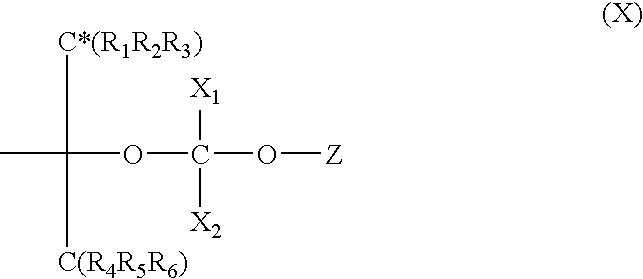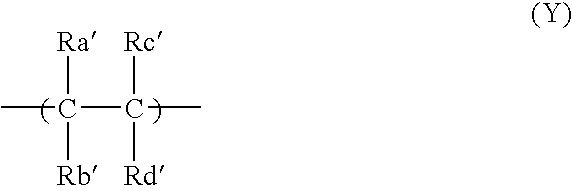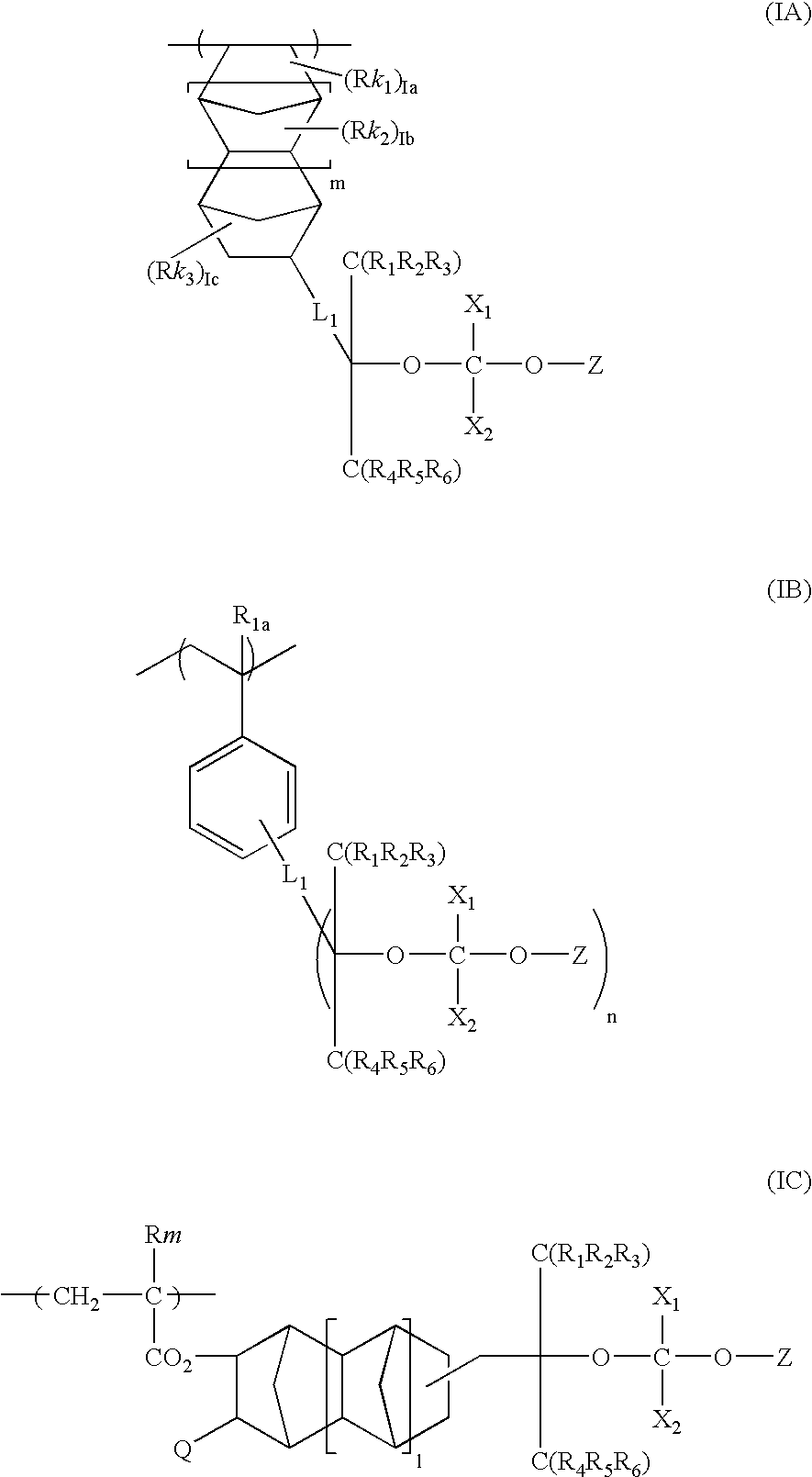Positive resist composition and pattern formation method using the same
- Summary
- Abstract
- Description
- Claims
- Application Information
AI Technical Summary
Benefits of technology
Problems solved by technology
Method used
Image
Examples
synthesis example 1
Synthesis of Monomer Having Acid-Decomposable Group
In tetrahydrofuran was dissolved 27.5 g of 3-(5-bicyclo[2.2.1]hepten-2-yl)-1,1,1-trifluoro-2-(trifluoromethyl)-2-propan-2-ol and the resulting solution was cooled to 0° C. under nitrogen atmosphere. To the solution was added 4.6 g of sodium hydride (60%) over a period of 30 minutes and then was dropwise added 20.4 g of chloromethyl methyl ether, followed by stirring for 30 minutes as it was. The temperature of the reaction solution was raised to room temperature, and then 300 ml of ethyl acetate was added thereto. The reaction solution was washed three times with each 500 ml of distilled water. The ethyl acetate layer separated was treated in an evaporator to distill off the ethyl acetate to obtain 28.9 g of Monomer (M1) shown below.
synthesis example 2
Synthesis of Resin (F-1)
In 100 ml of tetrahydrofuran were dissolved 13.3 g of acid-decomposable Monomer (M1) described above, 6.0 g of α-trifluoromethylacrylic acid 2-ethyladamantyl ester and 9.2 g of α-trifluoromethylacrylic acid dihydroxyadamantyl ester and the solution was introduced into an autoclave under nitrogen atmosphere. 1.24 g of an azo series polymerization initiator (V-65, manufactured by Wako Pure Chemical Industries, Ltd.) was added and then 2.0 g of tetrafluoroethylene was charged, followed by reacting at 70° C. for 10 hours with stirring.
To the reaction solution was added 500 ml of hexane to precipitate a polymer and the supernatant liquid was removed by decantation. The remaining viscous polymer was dissolved in 50 ml of acetone and one liter of hexane was again added thereto to conduct separation treatment of the polymer, thereby removing the unreacted monomers and oligomer components. The polymer obtained was subjected to measurement of molecular weight by ge...
PUM
 Login to View More
Login to View More Abstract
Description
Claims
Application Information
 Login to View More
Login to View More - R&D
- Intellectual Property
- Life Sciences
- Materials
- Tech Scout
- Unparalleled Data Quality
- Higher Quality Content
- 60% Fewer Hallucinations
Browse by: Latest US Patents, China's latest patents, Technical Efficacy Thesaurus, Application Domain, Technology Topic, Popular Technical Reports.
© 2025 PatSnap. All rights reserved.Legal|Privacy policy|Modern Slavery Act Transparency Statement|Sitemap|About US| Contact US: help@patsnap.com



